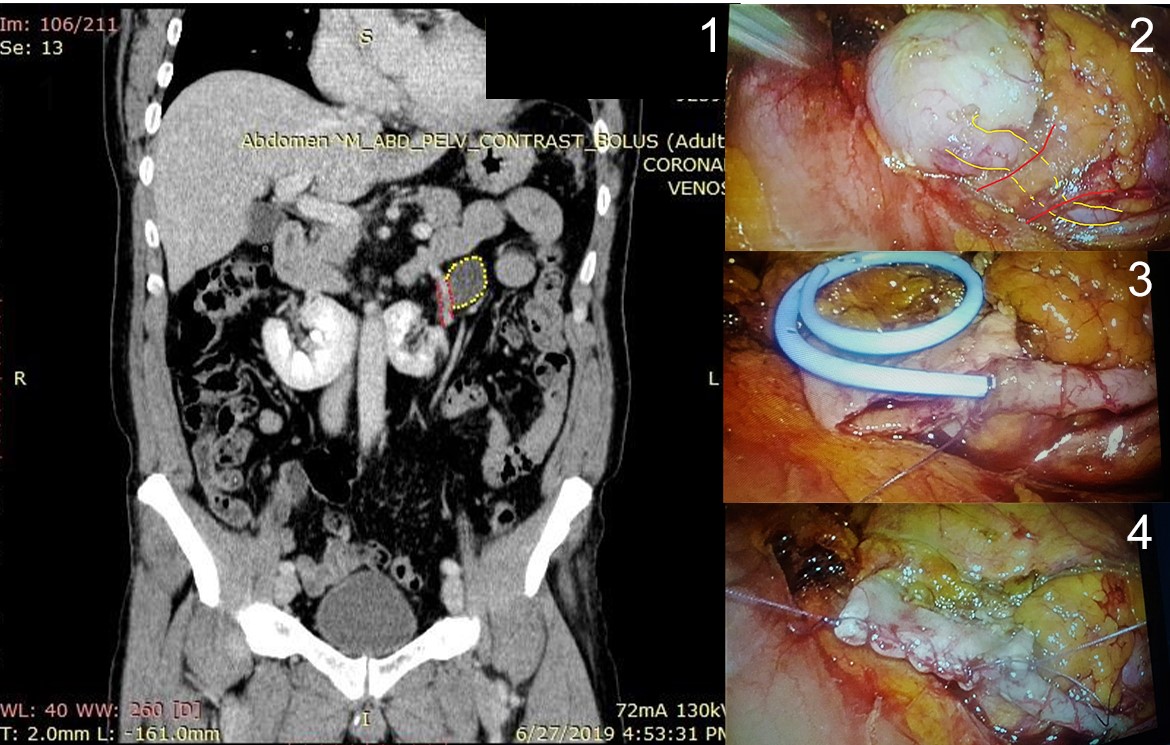Laparoscopic pyeloplasty for ureteropelvic junction obstruction with aberrant renal vessel at lower pole in a patient with a horseshoe kidney
Image Description
Horseshoe kidney (HSK) is a relatively common congenital condition with an incidence of about 1: 400 to 1000 live births. Most cases remain asymptomatic and are incidentally detected during radiological investigation, surgery or autopsy. However, in certain cases, pathological conditions are associated. Pelviureteric junction (PUJ) obstruction with subsequent hydronephrosis occurs in 15-33% of patients with this abnormality. The causative factors for PUJ obstruction in HSK are the high insertion of ureter in the renal pelvis along with anatomic relation of the ureter to the isthmus and aberrant crossing lower pole renal vessels.
We present a case of PUJ obstruction in a HSK that was successfully treated by laparoscopic transperitoneal Hynes-Anderson pyeloplasty without isthmectomy. A 46-year-old male with intermittent left flank pain was diagnosed (CT scan) with PUJ obstruction due to compression by an aberrant lower pole artery (Figure 1 and Figure 2). After the PUJ and redundant renal pelvis was excised, pelviureteric anastomosis was performed anterior to the artery lower pole (Figure 3 and Figure 4). The patient recovered uneventfully and experienced resolution of symptoms and hydronephrosis.
References
Weizer AZ, Silverstein AD, Auge BK, Delvecchio FC, Raj G, Albala DM, Leder R, Preminger GM. Determining the incidence of horseshoe kidney from radiographic data at a single institution. J Urol. 2003 Nov;170(5):1722-6. doi: 10.1097/01.ju.0000092537.96414.4a. PMID: 14532762.


